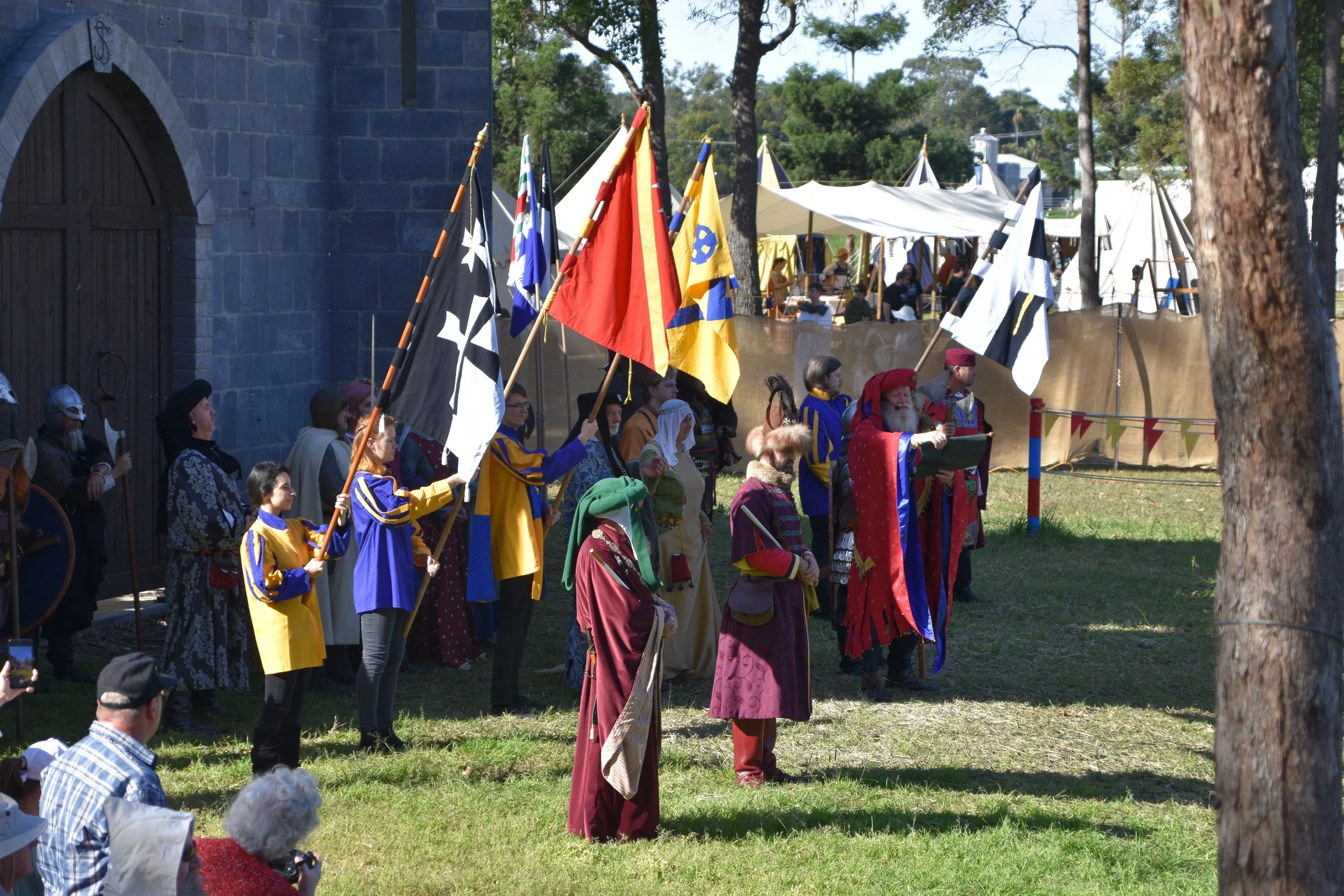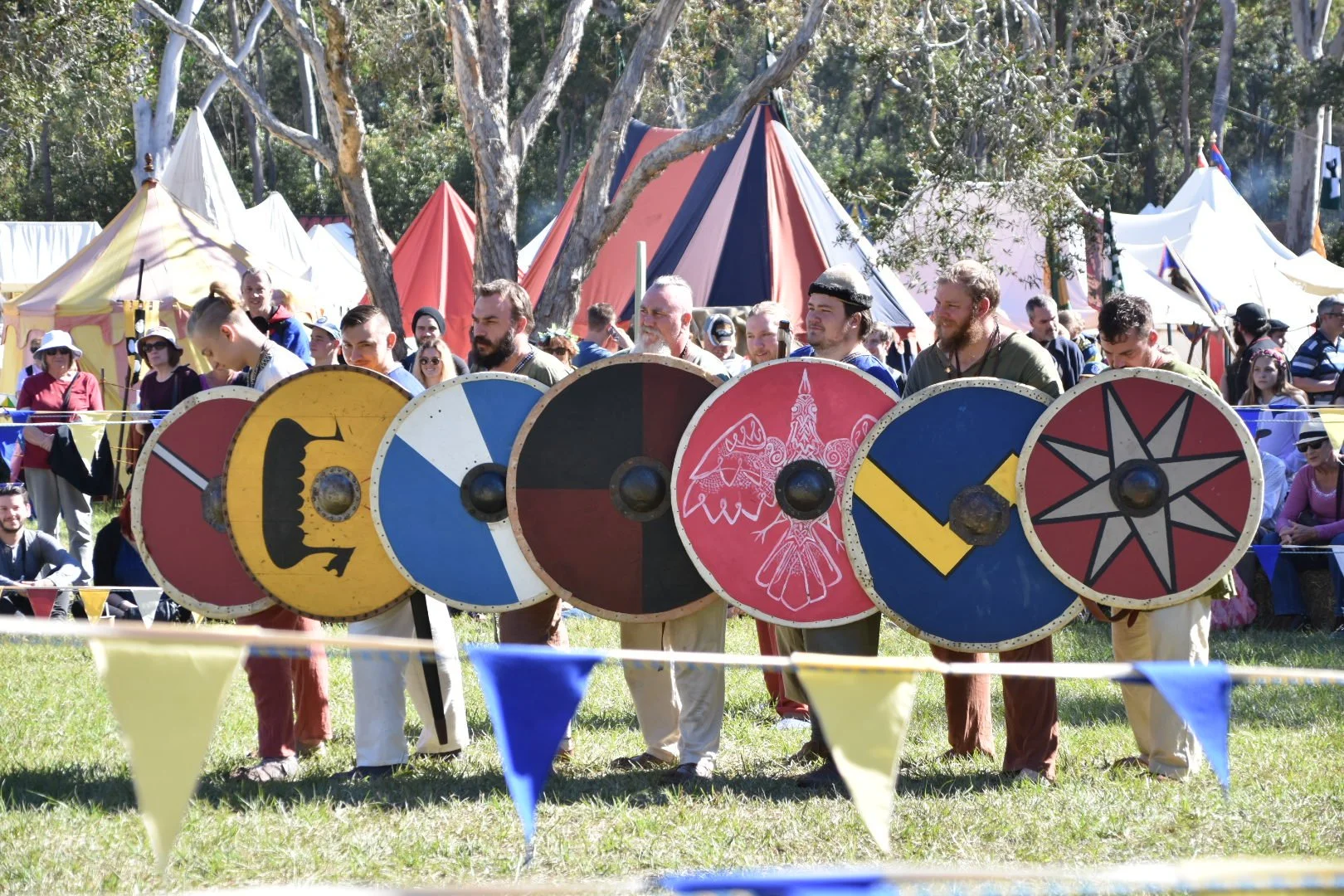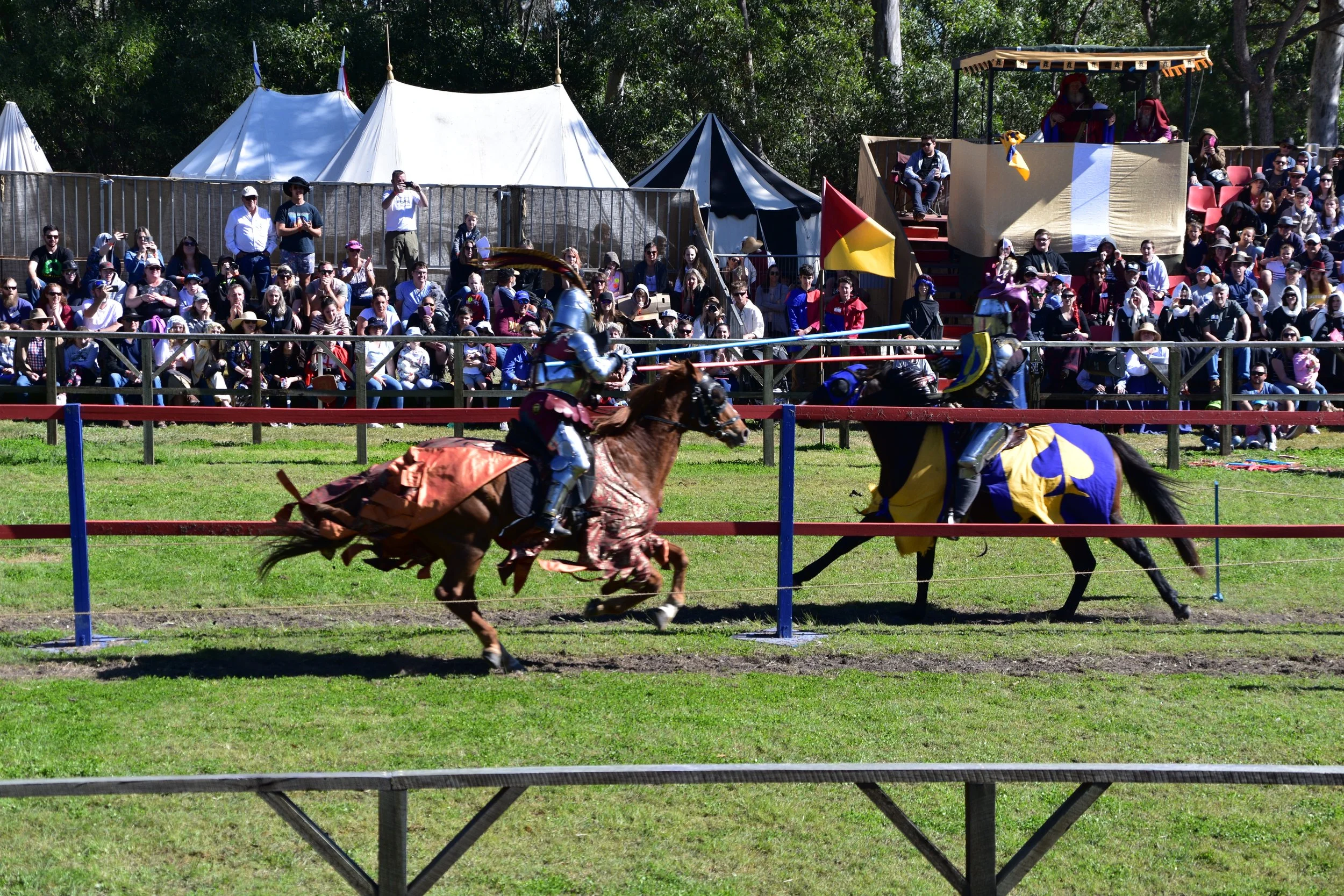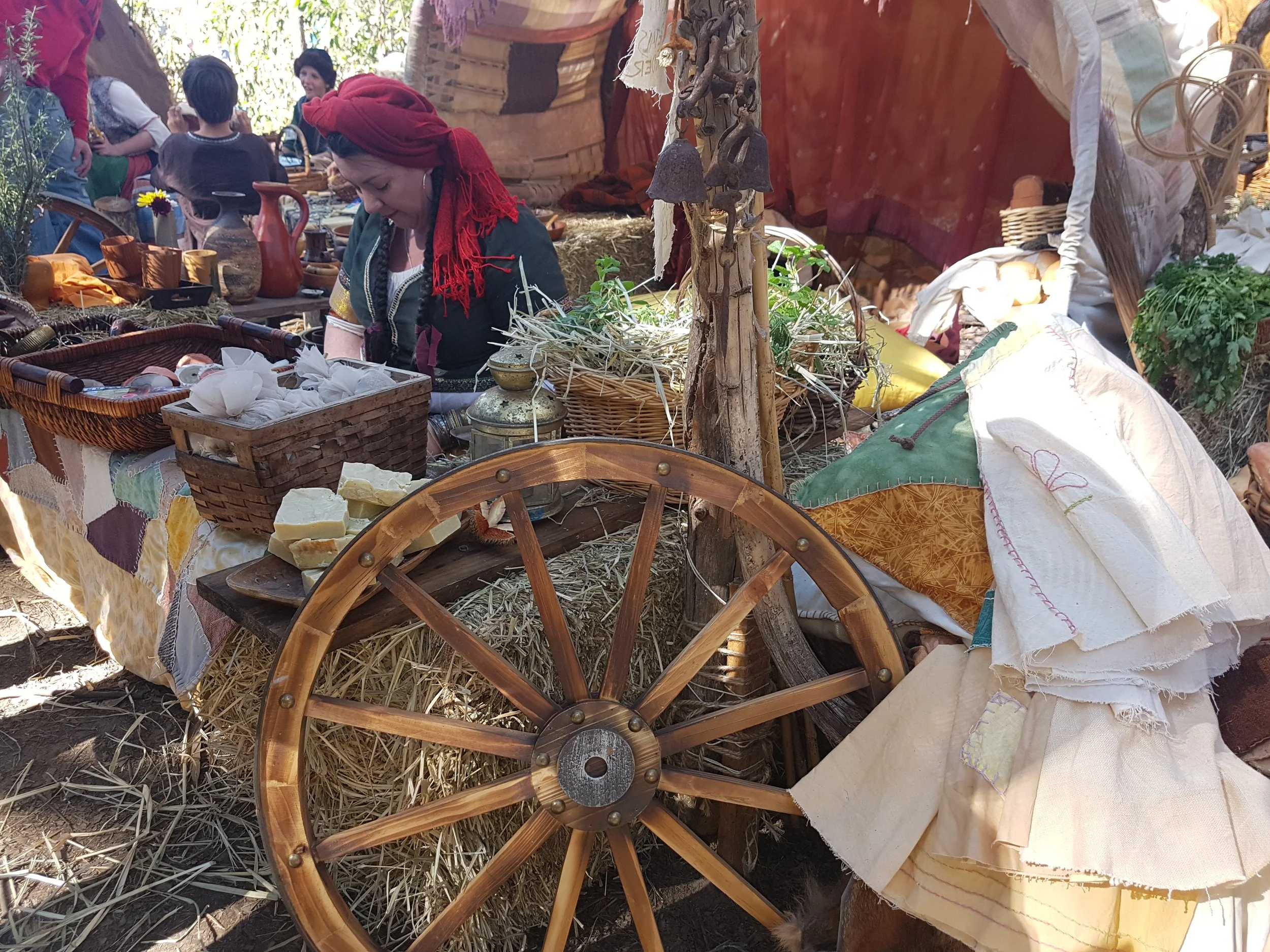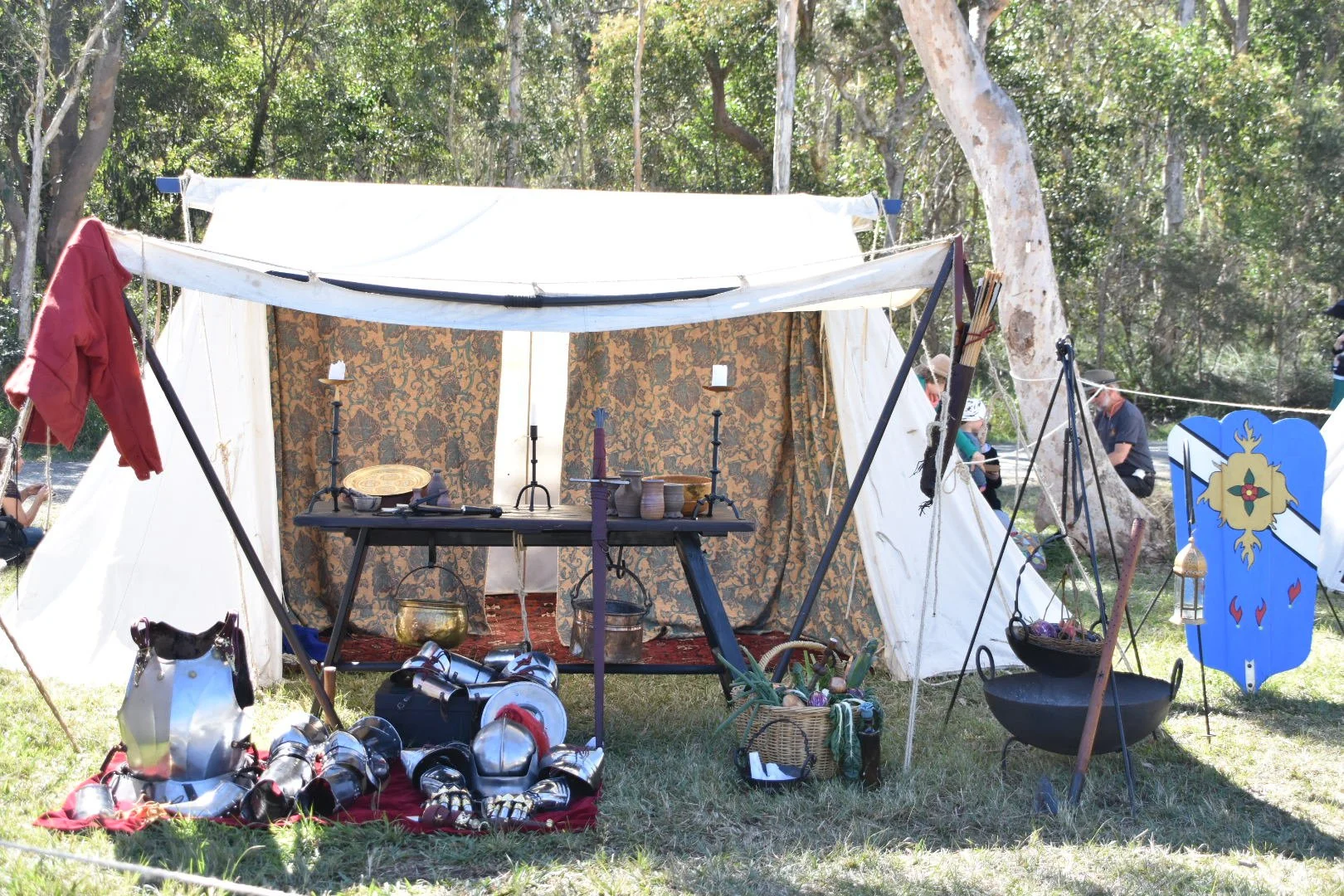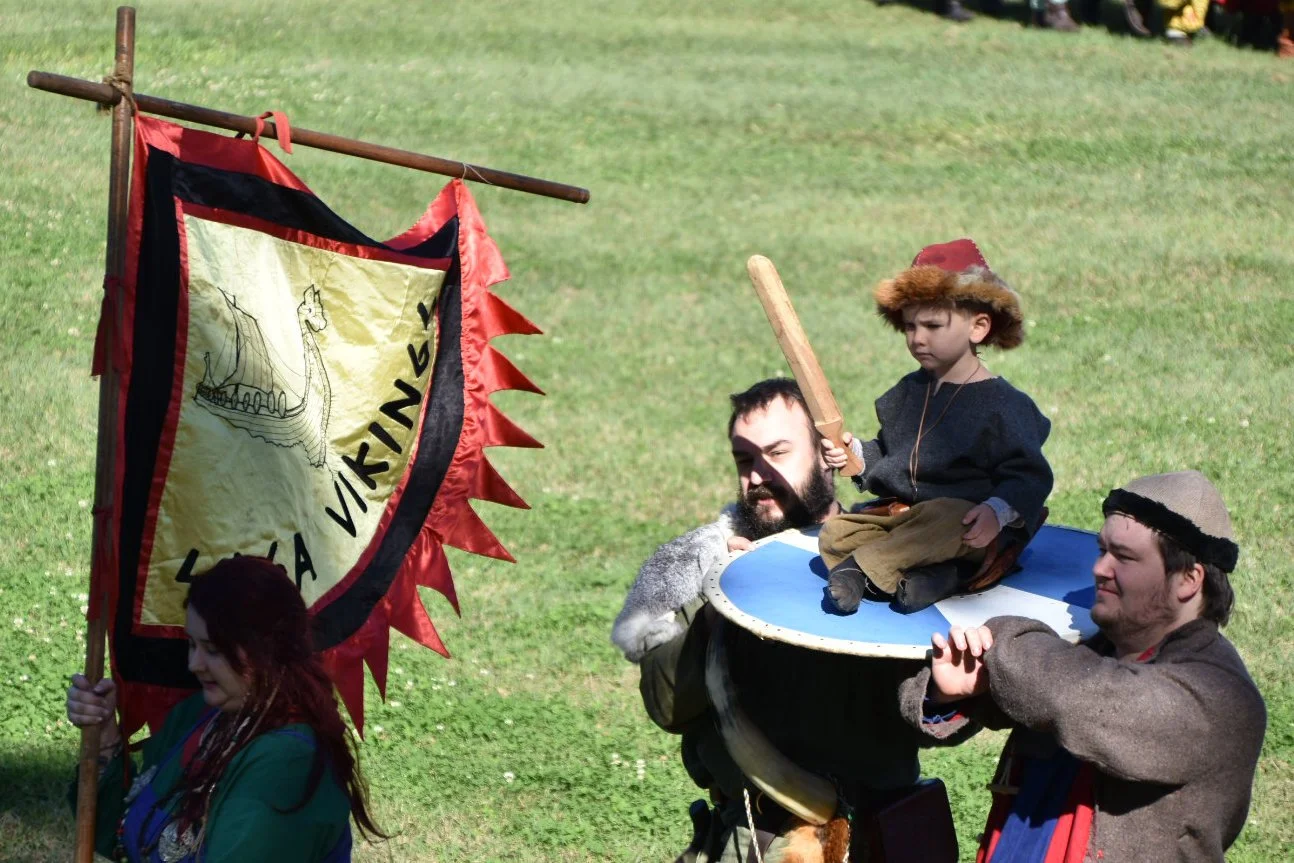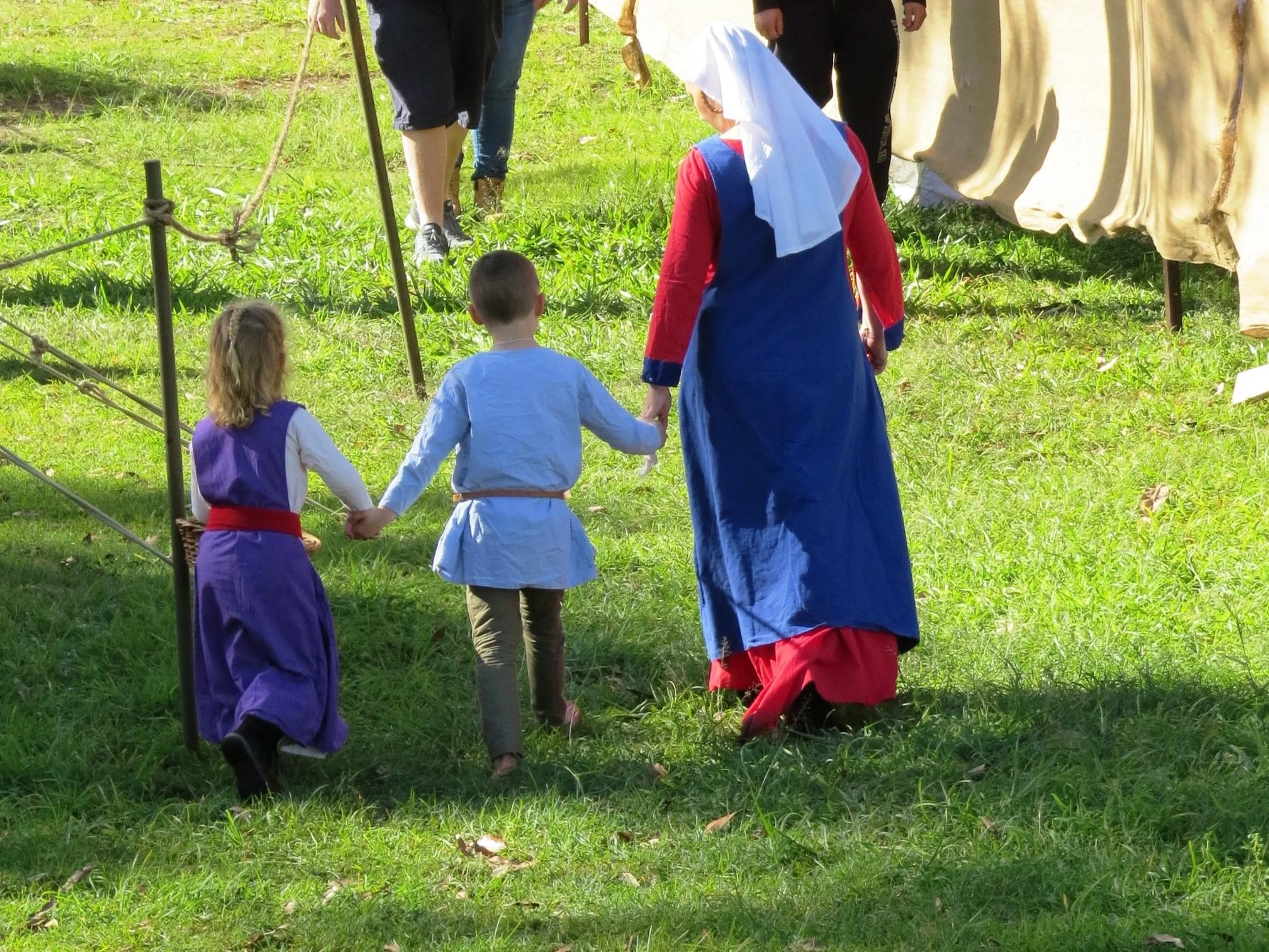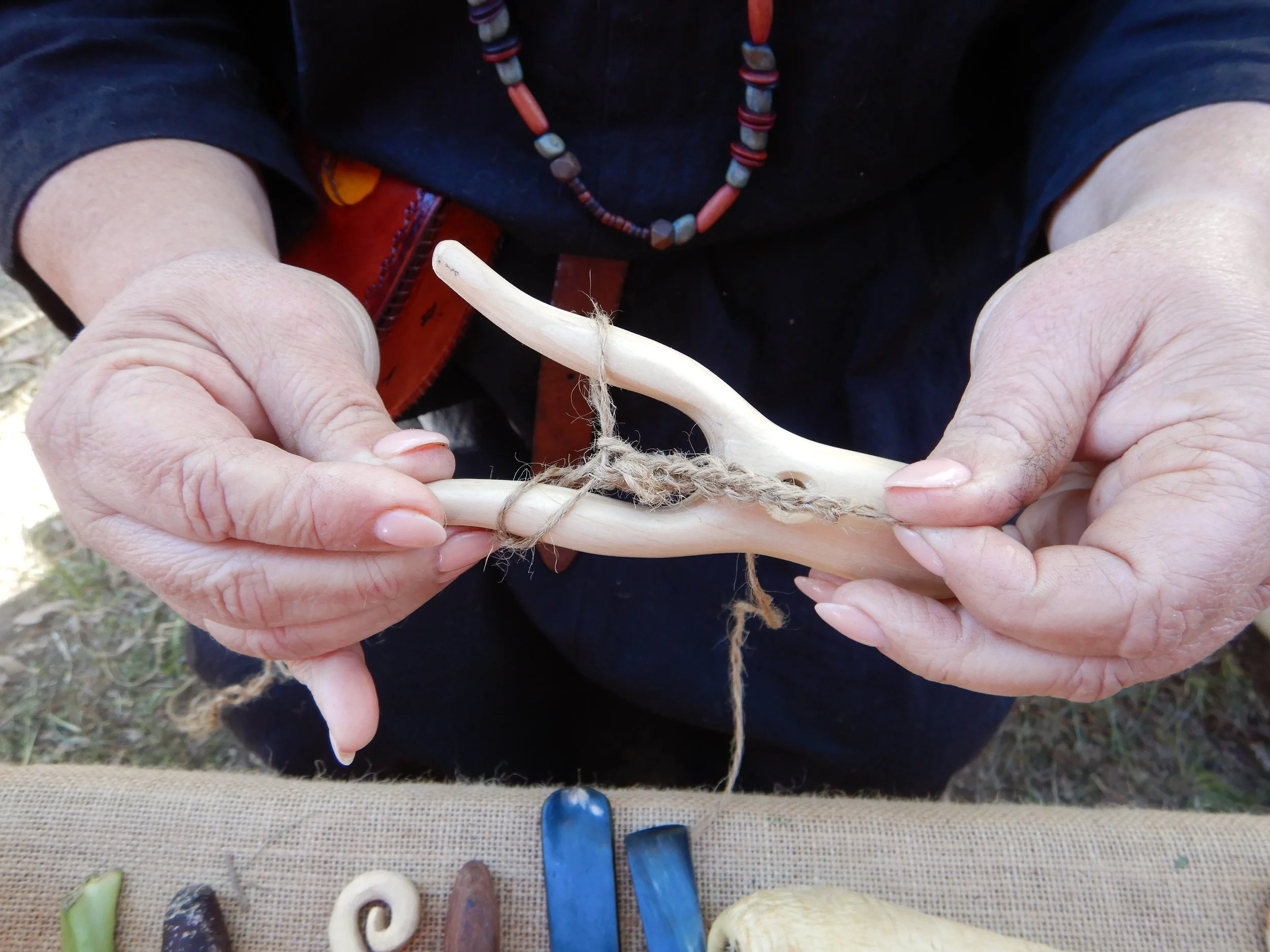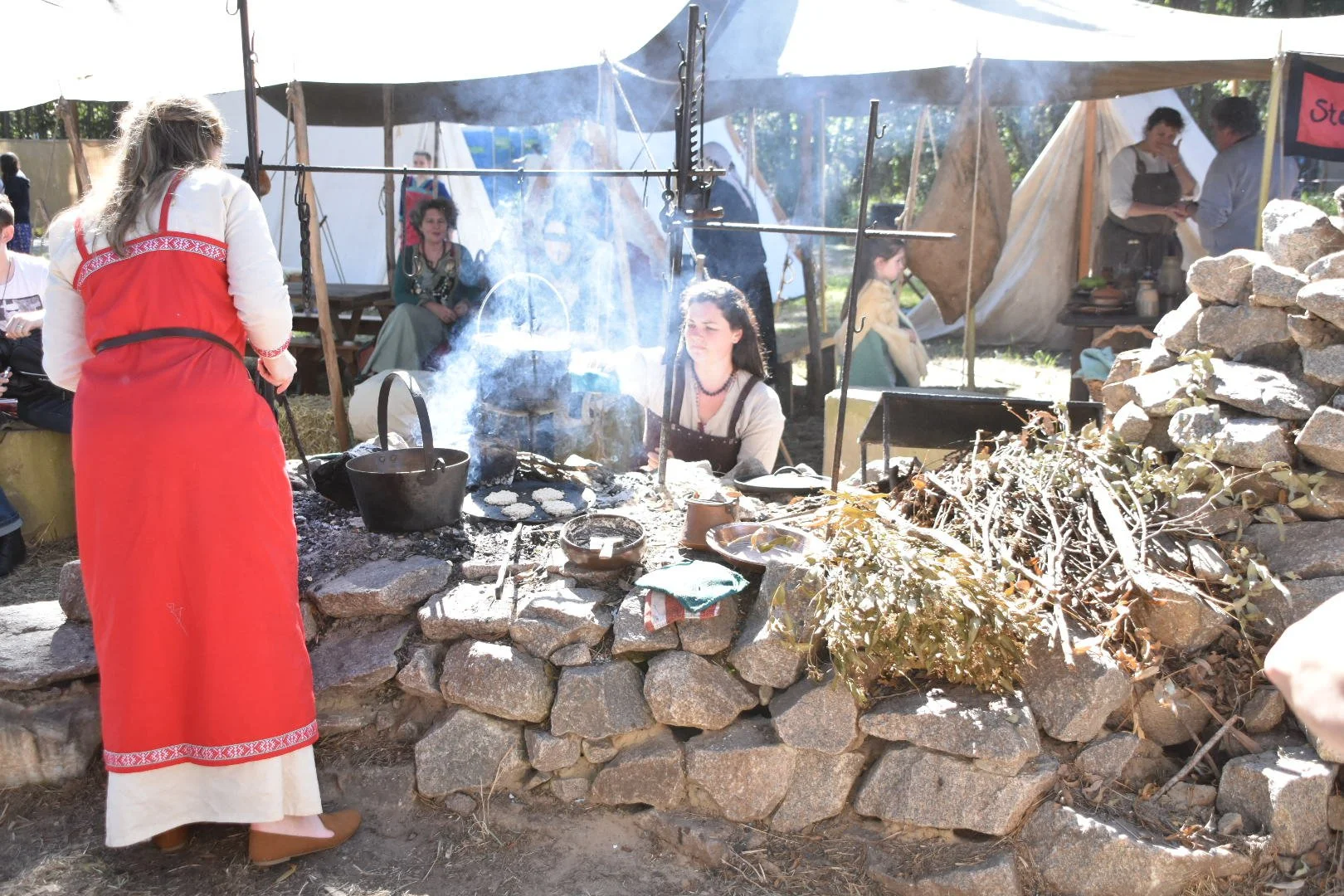Echoes of the Middle Ages: Where Past Meets Present
There’s something about the clang of steel on steel, the scent of woodsmoke, and the flutter of banners against a winter sky that always stirs something in me.
Every July, the Abbey Medieval Festival transforms a quiet corner of Southeast Queensland into a place where centuries collide, where knights ride, artisans craft, and crowds gather to glimpse the echoes of the past. Over the years, I’ve been quite a few times, not just for the living drama, but for the way it makes me feel - grounded, curious, and quietly connected to something far older than myself.
In this post, I want to take you with me, not just to the festival, but into the thoughts it stirred. I’ll share a few snapshots from the festival, a conversation with some extraordinary re-enactors, and even a quick interview with a fellow festivalgoer. Because sometimes, what stays with you most isn’t what you expected to find.
A Living Tapestry of History
The Abbey Medieval Festival isn’t just a weekend event, it’s a stepping stone. As you pass through the gates, the modern world melts away and in its place rises a buzzing medieval village, bursting with sound, movement, and stories.
Everywhere you turn, there’s something happening: armoured knights practicing for a tournee, drummers setting a warlike rhythm in the distance, and hawkers calling out wares in the marketplace. It’s loud, it’s joyful, it’s chaotic but it’s also absolutely fascinating.
Each day begins with the Grand Parade, a stirring celebration of every re-enactment group taking part. Banners are raised, drums beat a rhythmic welcome, and families march together in full historical dress, from the tiniest toddlers to seasoned veterans. It’s a moving reminder that history lives on, not in museums, but in people. The parade concludes with a rousing cannon blast, echoing across the fields and drawing cheers from the crowd, a fitting signal that the medieval magic has officially begun.
The jousting remains one of the festival’s most iconic draws. Crowds line the lists, craning to see the armoured riders thunder past in a blur of colour and impact. Children gasp, adults cheer, and even those who’ve seen it before still get swept up in the raw spectacle.
And the weapon displays are in a league of their own. You’ll find yourself unexpectedly riveted as experts demonstrate everything from fencing to longbows and poleaxes. They don’t just show you how the weapons worked, they explain why it mattered. Why the weight and balance of a sword, the discipline of a shield wall, and the split-second timing of a counterstrike, were all a matter of life and death.
And then there’s the trebuchet — an awe-inspiring centrepiece that never fails to draw a crowd. Operated by the Cottereaux re-enactment group, whose camp also features impressive siege weaponry like a battering ram, it’s a striking display of medieval engineering. No matter how many times this mighty machine is launched, it remains one of the festival’s most anticipated spectacles. The crowd surges forward every time, camera phones aloft, as if hoping to capture the precise moment the great wooden machine flings its projectile into the air. It’s a bit comical really as the object itself often disappears in the sky long before anyone spots it, however the excitement is always there. It’s not just about seeing it fly. It’s about feeling the whoosh, the power of a siege weapon brought back to life before your very eyes.
One year, they actually closed the festival with the burning of a Viking ship on the lake, a fiery farewell that felt like something pulled straight from legend. The flames reflected in the water, the silhouettes of longboats and re-enactors watching solemnly from shore… it was hauntingly beautiful. A ritual performed not just for the spectacle, but for the stories it invoked.
For anyone who’s ever wondered what it might feel like to live in another century, this is the place where constant wonder walks beside you. You don’t just watch history here. You breathe it in.
An Unexpected Turn in the Tale
As I wandered the festival this year, I found myself pausing, not because something was wrong, but because something had changed.
Not loudly, not obviously. Just a quiet shift in tone, a new thread weaving its way through the fabric of the event.
It wasn’t the re-enactments or the displays, or even the camps, as those still drew the crowds and admiration. It was something else, something I hadn’t noticed quite so strongly in past years. The medieval festival, once a haven of historical immersion, seemed to be slowly absorbing a new kind of energy. One shaped by fantasy.
Now let’s take a moment to think about the fact that there’s something deeply meaningful about historical re-enactment. It’s not just dressing up, it’s disciplined, researched, often extremely expensive, and undertaken with a love of detail and authenticity that goes far beyond aesthetics.
These people aren’t just performers. They’re living historians. They sweat in woollen hose in the heat of the Queensland sun, learn how to fight with real weighty weapons, and painstakingly stitch their own banners and garments to echo the past as faithfully as possible.
Their passion matters!
However, this year, amongst the linen tunics and maille-clad knights, I saw cloaks worthy of elves, face paint fit for witches, and more than one outfit that could have walked straight off the set of Game of Thrones or Lord of the Rings. And while there’s nothing inherently wrong with that, imagination is, after all, a beautiful thing, it did raise a question I found myself pondering.
Are we beginning to blur the lines between history and fantasy, shaped by the stories we see on screen and in games. And is that blurring so much so, that we forget where one ends and the other begins?
Now don’t get me wrong, the curiosity of the wider public is very important, I have always believed that almost anything is good if it draws one into the rabbit hole of history. So if fantasy is that drawcard, so be it, and maybe that’s not such a loss. Perhaps, instead, it’s a new kind of gateway. Maybe the child who comes to the festival in a dragon costume will be the teenager who picks up a book on medieval kingship… and the adult who one day joins a re-enactment society themselves.
Still, I couldn’t help but notice that subtle balancing act, the gentle sway between entertainment and education, between honouring the past and embracing imagination. It certainly made me look at the festival with new eyes.
And perhaps that’s what makes it all so powerful. Not that it stays the same, but that it invites us to keep thinking, keep questioning, keep wondering.
Even if that wondering starts with a plastic sword and a pair of fairy wings.
A Living Connection to the Past
If you’ve ever wandered through any of the historical encampments at the Abbey Festival, you’ll know it feels different. It’s not just a display, it’s a community that is alive. It’s the smell of woodsmoke, the hand-stitched tents, the clatter of pots, and the gentle rhythm of craft and conversation. More importantly, it’s the quiet purpose of people keeping the camp alive: a man working the bellows, women churning butter, hands busy with tasks that don’t just echo the past, but are vital to living it. This isn’t make-believe. It’s dedication.
Historical re-enactors are often the unsung heroes of public history, not professional historians, perhaps, but keepers of authenticity nonetheless. Their commitment runs deep: in the fabric of their clothing, the historical accuracy of their tools, and the long hours spent teaching others not just what the past looked like, but what it felt like.
This year, I had the joy of speaking with one re-enacting family that is three generations strong, about why they do what they do. Their answers were thoughtful, personal, and full of the kind of insight that only comes from living history, not just learning it.
Inside the Encampment: A Generational Pastime
As mentioned earlier, the Grand Parade is a colourful procession of not only many groups, but also all generations. Elders walk proudly in their well-worn garb, children scamper barefoot in tunics, and parents carry infants wrapped in cloth or, in this particular image, an unforgettable moment from a previous year, a youngster sitting proudly atop a wooden shield - well and truly a little Viking in the making.
Throughout the camps you will see all ages working and playing together, but most of all participating in an incredible story, one that has leapt straight from the pages of time.
It’s more than pageantry. It’s a dance between past and present.
And that my friends, is the quiet power of re-enactment, it’s not just about portraying the past, but passing it on.
And few families reflect that spirit better than the one I spoke with over the festival weekend. Tucked among the canvas tents, crackling fires, and worn wooden benches, I spent time with a family who live and breathe re-enactment, not just on festival days, but in the rhythm of their everyday lives. They come not for show, but for connection. For preservation. For purpose.
Here’s a glimpse into that world, in their own words.
What draws someone to step into history rather than just read about it?
“I was originally drawn to dancing,” said one of the adults. “And that led me into re-enactment, it’s not just performance, it deepens your understanding of the past. It becomes part of who you are.”
The grandmother added, “I have watched my daughter bring the love of dance to life for over 9 years, seen her dedication to authenticity and to keeping the real essence of history alive. This year was my first time in costume, and I found myself thinking a lot about the lives of the people we represent. It has raised so many questions for me and I’m already on the hunt for answers.”
Why do you think it matters to keep real history alive when so much of what people love today is based on fantasy versions of the past?
When asked this question, the grandmother said “The costumes and fantasy outfits I saw this weekend were a real eye opener and I wonder if this is people wanting to shock, or are they searching for their own identity. I would have loved to talk to some of them about their outfits. Maybe one day these costumes themselves will be history. However, despite this, real history will always be there. People may try to erase it or rewrite it, but there will always be diehard historians who will seek to find the truth, the real stories behind the fluff.”
The grandfather added “For years, I have always gone and checked facts after watching or reading anything about history.”
And I guess this points to the reality that those who are truly interested will not take for granted that something is accurate just because they see it on a screen.
What do children gain from this that they might not get elsewhere?
For this question, the boys in the family didn’t hesitate: “We get to make things with our hands. We learn about fire, about bread, about selling our own wares. The youngest one excitedly claimed “And this year I got to use the bellows which are really old and not around today.” Not missing out on his part in the conversation, the oldest boy said “I like showing and telling people about my Lucet knitting. I do wonder what materials they used back then. Most people don't know about Lucet knitting and I can tell them the Vikings did it!”
Their grandfather reflected upon this too. “For the young people in the encampment, unlike their counterparts out in the modern world who rely on instant gratification for their food and entertainment, they had to co-operate with other members to complete tasks, eg moving the horse, relocating the wagon, setting up tents, and looking after the fire. The kids had to make their own entertainment, source water and food and be an active part of the community.”
There was something quietly profound in hearing a child say, “I do think about what it would’ve been like to live back then.”
Has being part of a re-enactment group changed the way you actually view history?
“For me,” said the mother, “it hasn’t changed how I see history at all because I’ve studied it for years. But it has made me more determined to keep it alive. To pass it on.”
The oldest boy jumped in “No, I do ancient history at school and we have a lot of history books at home and I have read a lot of books both fact and fantasy. I have also seen lots of documents about history.”
As you can see, the world of re-enactment is more than just show, it’s a way of learning, connecting, and sparking curiosity that stays with those who witness it, and more so with those who take part.
Re-enactors aren’t actors. They’re guardians of memory, storytellers in linen and leather. They bring to life what textbooks cannot, and that is the human heartbeat of history.
Through Seasoned Eyes: Reflections of a Festivalgoer
Not everyone who walks through the gates of the Abbey Medieval Festival arrives in costume or with a background in history — some return year after year simply for the joy of being transported. And sometimes, it’s those seasoned visitors, the ones who’ve seen the festival slowly evolve, who notice the quiet shifts most clearly.
I recently spoke with a friend who has attended the festival several times. Her reflections, honest and thoughtful, offered a lovely counterpoint to the voices of the re-enactors, a reminder that history speaks to each of us in different ways.
What surprised you most about the festival experience?
“Sometimes it's the little things,” she said. “I saw two people in costume pushing a barrow. I moved closer to see what they were selling, and was surprised to find it was toffee apples.”
Moments like that, simple and unexpected, linger. They remind us that part of the magic lies in the collision of the everyday with the extraordinary.
There’s been a lot of blending between fantasy and history at festivals like this — did that help or hinder your experience?
“Attracting new, broader audiences to the festival is great,” she noted. “Some of the fantasy costumes were amazing. However, I wouldn't like to see fantasy eclipse the opportunity to be part of an authentic historical reenactment experience. And fact is usually stranger (and much more interesting) than fiction.”
If you could go back in time for just one moment from what you saw — what would it be, and why?
Her eyes lit up at the question. “The camp, caravans, costumes and dancing at Shuvani camp makes me want to go back to join a nomadic group. I think I'd like more than a moment to experience the adventure though.”
Once again, the pull of history doing what it does best, a brief glimpse sparking a desire for something more enduring, inviting us in and down that rabbit hole.
Echoes that Linger
As I drove home this year, dust still clinging to my boots and the scent of campfire smoke still wafting through my clothes, I couldn’t help but replay the images in my mind.
The clang of steel on steel. The laughter of children in makeshift tunics. The hush of a crowd as a trebuchet soared skyward.
But more than anything, I kept thinking about the quiet power of those who choose to keep history alive, not through fantasy or performance, but through devotion, detail, and heart.
So as the festival unfolds, moment by moment, clash by clash, we come to realise that history has become more than simply words on a page, yes, it is changing. But perhaps change isn’t always a loss, sometimes it’s a chance to re-anchor ourselves in what matters most.
And for me, that’s the stories, the people and the past, still speaking loudly if we’re willing to listen.
I’d love to hear your thoughts. Have you been to a medieval festival lately? Have you noticed the atmosphere shifting, the blend of history and fantasy? Or do you find yourself drawn in no matter the setting, just happy to see the past echo in the present?
Comment below to keep the conversation going.
All Images © Plantagenet Discoveries

